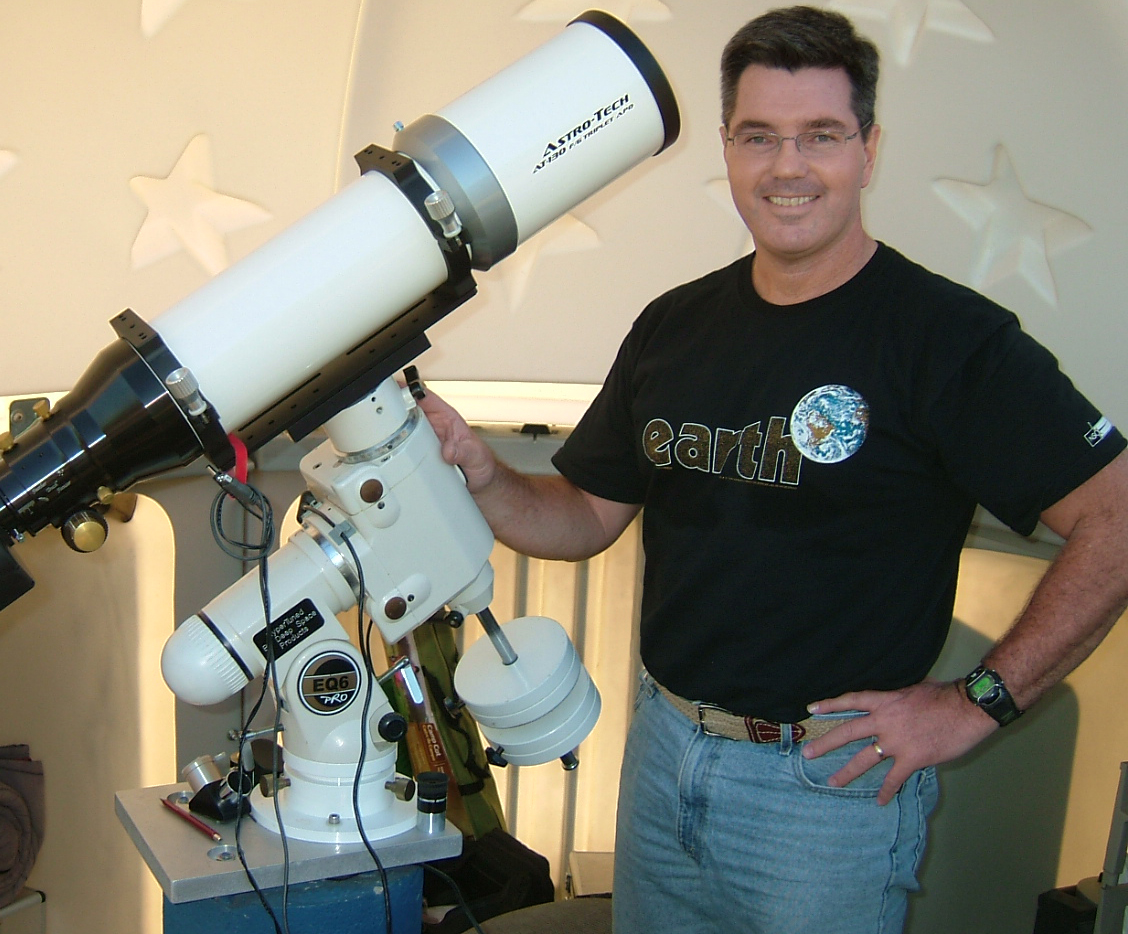
This week in the Universe, Earth continued to receive a relentless pounding from the Sun, Sol, our home star and the giver of life to our little blue planet.
You see ladies and gentlemen, we are experiencing a very active Sun right now as the 11-year solar cycle approaches its activity peak, known to scientists as Solar Max.
No, this is not named after me or vice versa.
This time is when the sunspot activity peaks and when the Sun is most likely to cataclysmically belch out trillions of tons at millions of miles per hour. If and when such a thing happens, it would be an X-class coronal mass ejection, or CME.
We are presently experiencing the third Solar Storm in five days. I’m not referring to a typical weather event; the scale of a massive solar storm defies human imagination as the Sun is capable of belching out trillions of tons of incredibly radioactive matter at Earth at millions of miles per hour. This has happened before and will happen again. Read on to find more on the current solar storm, previous and probable future events.
The first person to record his investigation of the Sun was Galileo Galilee around 1610. As stated above, the number of sunspots, measured as days of inactivity and the number of sunspots during activity rises and falls every 11 years. You can see for yourself on the two graphs below (courtesy Marshall Space flight Center) that the cycle really does work on an 11-year cycle.
Sunspots are localized regions of extremely intense magnetic fields. These magnetic fields intertwine, and the resulting magnetic energy can generate a sudden, violent release of energy called a solar flare. When I look through my telescope (with a solar filter) at the Sun, it looks like there’s a blanket holding in the heat of the Sun. This is pretty close to what the crossed up magnetic field lines are doing. Sunspots are actually cooler than the normal photosphere by about 4,500 degrees. The magnetic lines actually DO hold in the heat.
Figure 1 The 11-year Solar Cycle
When we say the Sun is “active,” this means that it has many sunspots. The solar space telescope in orbit right now called the Solar Dynamics Observatory (SDO) is akin to the Hubble Telescope of the Sun. See for yourself in a typical daily “quicklook” http://spaceweather.com/images2012/11mar12/hmi4096_blank.jpg?PHPSESSID=ohie24d5b0nvbgcu4o8auflre5 allow the page to load and then click on the image to see the full size.
The little bubbly things on the Sun’s surface you can see are literally the fused Hydrogen in the Sun’s core causing the Sun to roil and boil. These tiny bubbles are called Granules. What can be seen in the SDO daily image is called the Photosphere. An easy way to remember this is that we love to look at photographs so just think of this part of the Sun as the photograph sphere or photosphere.
Considering that the Sun is the closest star to us and that it is just about as average a star as there could be among the 200+ billion stars in our own galaxy which is very much like most of the other 200 or so billion other galaxies. I know, I know, this is why exponents and scientific notation come in handy because I don’t even know what one would call 200 billion 200 billion.
Back to the Sun and the number of features that can be observed in the photosphere with a simple telescope and Solar Filter. (WARNING: DO NOT EVER LOOK AT THE SUN WITHOUT A CERTIFIED SOLAR FILTER OR UNDER THE INSTRUCTION OF AN ASTRONOMER BECAUSE YOU CAN BECOME PERMANENTLY BLIND IN UNDER ONE SECOND). The Sun’s features include the dark sunspots, the bright faculae, and granules. We can also measure the flow of material in the photosphere using the Doppler effect. These measurements reveal additional features such as supergranules as well as large scale flows and a pattern of waves and oscillations. [i]
Figure 2 The author’s solar telescopes, bottom 80-mm refractor with white light solar filter (inset) top is a Hydrogen Alpha telescope that detects moving chromosphere flames.
The Sun is pretty complicated and many of its fundamental processes are being discovered only today with the help of the SDO. The Sun rotates on its axis once in about 27 days. This rotation was first detected by observing the motion of sunspots in the photosphere. The Sun’s rotation axis is tilted by about 7.15 degrees from the axis of the Earth’s orbit so we see more of the Sun’s north pole in September of each year and more of its south pole in March[ii].
Here’s where it begins to become complicated. Since the Sun is a ball of gas, it does not have to rotate rigidly like the solid planets in our Solar System (Mercury, Venus, Earth and Mars) and moons do. In fact, the Sun rotates faster at its equator (taking about 24 days) than the polar regions (which rotate once in more than 30 days). The source of this “differential rotation” is an area of current research in solar astronomy that the SDO is breaking ground on each new day. The bottom line on Solar research is that we certainly can’t do anything to control the Sun, just like we can’t deflect a killer asteroid that has a bead on Earth.
Problems don’t only happen when the Sun is very active. The Maunder Minimum is a period also known as the Little Ice Age in our history. Early records of sunspots indicate that the Sun went through a period of inactivity in the late 17th century. Very few sunspots were seen on the Sun from about 1645 to 1715. Although the observations were not as extensive as in later years, the Sun was in fact well observed during this time and this lack of sunspots is well documented.. There is evidence that the Sun has had similar periods of inactivity in the more distant past.
The problem posed by a very active solar cycle is that a large number of sunspots means a greater probability that the Earth will be struck by a face-on impact of a coronal mass ejection. Known as a CME, these events happen when the magnetic bands that cause a sunspot actually get stretched past their ultimate limit and snap. How bad can this kind of event really be? Not only can we have a Solar Super storm, but just such an event happened during the brief history of these United States.
During the first two days of September 1859, we experienced a Solar Super storm. Even 144 years ago, many of Earth’s inhabitants realized something momentous had just occurred. Within hours, telegraph wires in both the United States and Europe spontaneously shorted out, causing numerous fires. Imagine back then when the telegraph was king, what it must have been like to see the wires ignite and cause train stations to catch fire. At the time, most telegraphs were associated with railroad lines. Besides the telegraph lines, the famous Aurora Borealis pushed down as far south as Cuba; Rome, Italy; and Hawaii in the north and just as far in the southern hemisphere.
Just what happened when Earth experienced its “Perfect Solar Storm” in 1859? Like most bad things, this event was a combination of several events that occurred on the Sun simultaneously. If they took place separately they would be somewhat notable events. But together they caused the most potent disruption of Earth’s ionosphere in recorded history.
“What they generated was the perfect space storm,” says Bruce Tsurutani, a plasma physicist at NASA’s Jet Propulsion Laboratory.
The Solar Super storm during the last days of summer 1859 began with the development of a large number of sunspots: on Aug. 28, solar observers noted the development of numerous sunspots on the Sun’s surface. From Aug. 28 to Sept. 2, several solar flares were observed. Then, on Sept. 1, the Sun released a mammoth solar flare. For almost an entire minute the amount of sunlight the Sun produced at the region of the flare actually doubled.
“With the flare came this explosive release of a massive cloud of magnetically charged plasma called a coronal mass ejection,” said Tsurutani.
Not all coronal mass ejections head toward Earth. Those that do usually take three to four days to get here. This one took all of 17 hours and 40 minutes. Again, when I look through my telescope as a large group of Sunspots starts coming into view as the Sun rotates, I immediately know if the region is near the equator, whether it will be a threat. In order for the sunspot to be dangerous, the solar flare has to be pointing at Earth. Imagine a ball that is leaking air and you want to feel the leak. Spin the ball and when the leak is pointed directly at you, the air is felt because it is coming directly at your face. When a sunspot is on the equator of the Sun and near the middle as we see the Sun, it is literally aiming at Earth. This is what happened in 1859. We took a direct hit from what was probably an X-class event.
In 2003, I recorded what may have been the second most massive sunspot outbreak since 1859. Known as the Halloween surprise of 2003, we absolutely dodged the bullet that day. I’ll never forget because I was serving as the Army’s senior space officer at Vandenberg Air Force Base, CA at the time. I went to my quarters for a quick lunch and broke out my telescope to see the Sun. I noted that the Sunspots looked strange so I shot a quick video image. Back then I could not have the correct filter to see a CME, only a sunspot, but it still looked strange. On the way back to my workplace I stopped by the Space Weather office and asked the duty sergeant how it was going. They always perked up when someone showed interest in the space weather and this was no different. But this time, he frowned after looking at one of the computer displays.
Another thing I’ll never forget, although this is a funny thing. After looking at the computer screen, he tapped the glass on one of his instruments because he thought the needle was stuck…..on the computer display. What happened was that most of his instruments were frozen because they had been blown off the scale by an X-35+ CME. The only way we dodged the bullet was that the sunspot was not pointing at Earth when the CME it produced as the magnetic lines snapped and the CME actually blew.
I documented Sunspot 486 group that day with some pretty crude equipment but I think you get the message. The smallest black spots here are about the size of Earth!
Figure 3 The author’s image of the 2003 Halloween Surpris, sunspot 486
As of this writing on 11 March, 2012, we have one and perhaps two CMEs inbound to Earth. The solar storm is expected to hit Earth’s magnetic field today. Of particular interest is a CME launched toward Earth by a powerful M8-class eruption on March 10. Forecasters say the cloud could spark minor to severe geomagnetic storms when it arrives on March 11-12. High-latitude sky watchers should be alert for auroras tonight. If you are interested in this type of information, see http://spaceweather.com for updates.
Oh and one last thing, I can’t help bringing this up because I love to see the Doomsayers get all fired up. The current Solar Cycle (#24) peaks this summer. I know that’s not exactly Dec. 21 when the world is supposed to come to an end according to a calendar I have never seen, but the cycle can be off by as much as six months. Maybe the doomsdayers will have their day yet. I hope not. However, I am fond of noting when my family members are present, “we’re ok;” these (sunspots) are not coming across the middle of the Sun.
Our Universe Today is a column written by Blue Ribbon News special contributor, Max Corneau, who has lived in Rockwall with his family since 2000.
Max retired from the U.S. Army in 2009 as a Lieutenant Colonel, Senior Space Operations Officer and Master Aviator. He amassed over 3,200 hours as a pilot of Special Electronic Mission Airplanes. Since 2004 he has been a NASA/JPL Solar System Ambassador, is a Master of Astronomical Outreach through the Astronomcial League and built his own astronomical observatory. His amazing images can be seen at AstroDad.com.
To submit your news and events or a guest column on your area of expertise, email editor@BlueRibbonNews.com.
[i] NASA Marshall Spaceflight Center “The Phosphere” http://solarscience.msfc.nasa.gov/surface.shtml accessed on 11 March 2012.
[ii] IBID.








